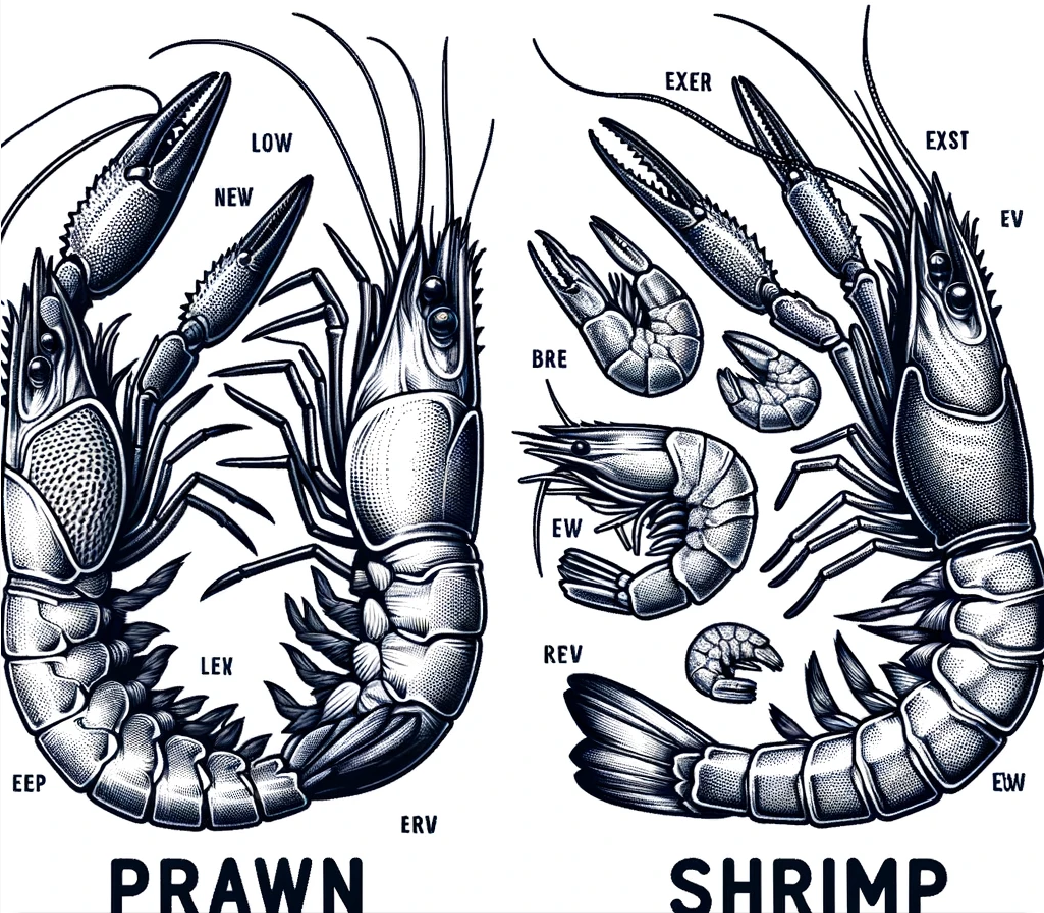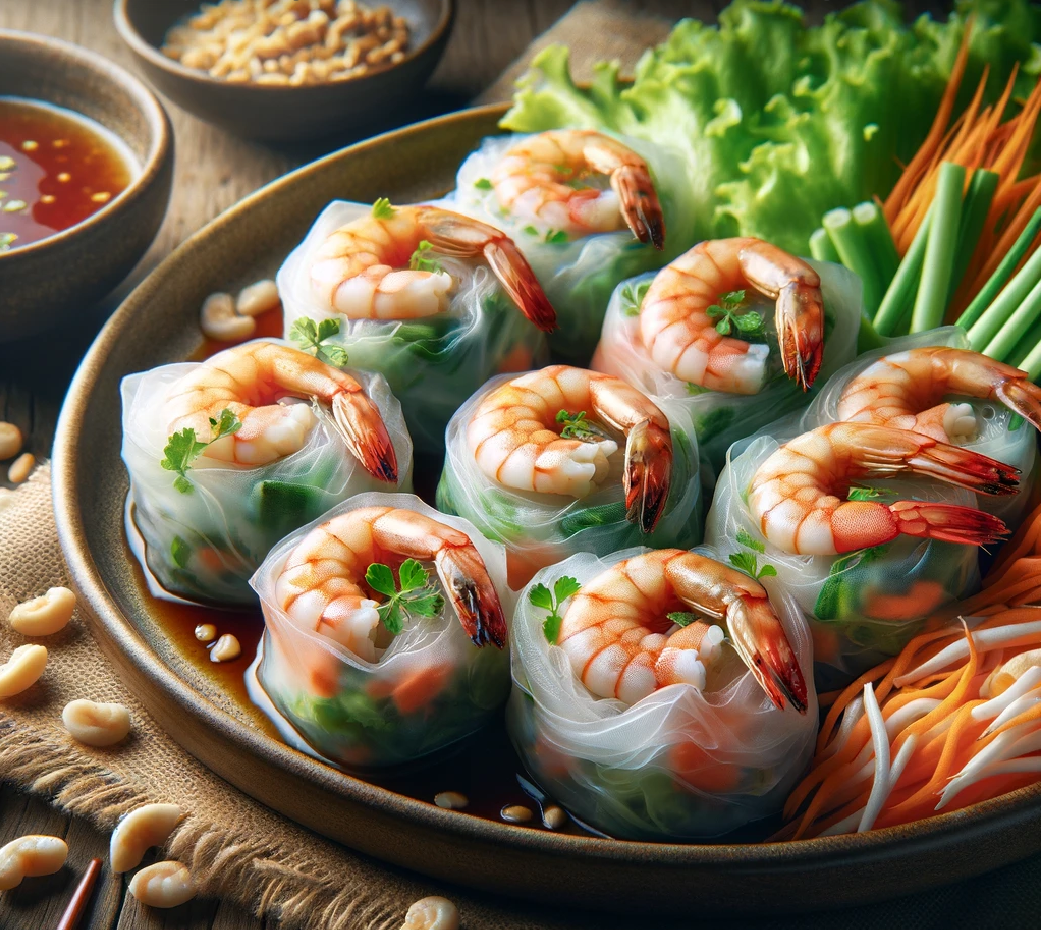One of the most prevalent questions that puzzle many is whether prawns and shrimps are the same species or distinctly different creatures. This query stems from the common confusion and interchangeable use of the terms ‘prawn’ and ‘shrimp’ in culinary and colloquial contexts. Despite their strikingly similar physical appearances, prawns and shrimps are not the same entity.
Prawns and shrimps are, in fact, different types of marine crustaceans. They belong to separate families in the aquatic world, each with its unique characteristics. This distinction extends to the various species within each group that are popularly consumed. The differences between them are not just nominal but biological, impacting their habitat, anatomy, and even their flavor profile. Understanding these distinctions is essential for both culinary experts and everyday consumers, as it influences cooking methods and flavor expectations.
Are you curious to understand the specific differences that set prawns and shrimps apart? Join us as we delve into an informative journey to discover the unique characteristics that distinguish these two popular seafood choices. We’ll explore not only their differences in species classification but also how these variations impact their culinary uses and flavor profiles. Let’s embark on this exploration to unveil the fascinating distinctions between prawns and shrimps in both biological and gastronomic terms.
Comparative Biology of Prawns and Shrimps: Understanding the Distinct Species

Prawns and shrimps, although both members of the aquatic world, represent distinct species within the family of decapod crustaceans, a term that denotes their shared characteristic of possessing ten legs. Despite this commonality, prawns and shrimps exhibit significant differences in their physical structure and natural habitats, marking them as unique entities in the marine ecosystem.
One of the most notable differences between prawns and shrimps lies in their size. Generally, prawns are larger compared to shrimps, a distinction that is easily observed. This size variation is one of the simplest ways to differentiate between the two species.
Delving into the specifics, several types of prawns are prevalent, each with its own characteristics. Among the most common varieties are the tiger prawn, known for its distinctive striping; the Indian prawn, a staple in South Asian cuisine; the king prawn, often a highlight in culinary dishes due to its larger size; and the giant river prawn, a species renowned for its considerable size and found primarily in freshwater environments.
In contrast, the shrimp family includes species such as the brown shrimp, often identified by its typical reddish-brown color; the white leg shrimp, a common species in aquaculture; and the Atlantic white shrimp, known for its sweet flavor and a popular choice in culinary preparations.
Understanding these differences not only enriches our knowledge of marine biology but also aids in the culinary arts, where the unique characteristics of each species can be used to enhance various dishes. The distinction in habitat, size, and type highlights the rich diversity that exists within these two categories of decapod crustaceans.
Comparative Structure of Prawns and Shrimps
Prawns are characterized by their distinctive branching gills and the presence of claws on three pairs of their legs. Unlike shrimps, prawns have a notably straighter body structure. This straightness is a key differentiator from shrimps, whose bodies tend to exhibit a more pronounced bend. Prawns’ elongated legs further distinguish them, lending to their unique appearance.
In contrast, shrimps possess plate-like gills, a distinct anatomical feature that sets them apart from prawns. Shrimps also have claws, but these are present on only two pairs of their legs. The body of a shrimp is not only slightly bent but also clearly segmented, giving them a characteristic profile.
A notable difference lies in the size of their pincers. Prawns have larger second pincers, which are more prominent than their front ones. This contrasts with shrimps, where the front pincers are typically larger and more dominant in their physical appearance. Despite these differences, both prawns and shrimps are categorized broadly under the umbrella of shellfish, sharing several commonalities in their overall biological classification.
Diverse Living Environments of Shrimps and Prawns
Shrimps and prawns, two distinct yet commonly confused species, thrive in markedly different aquatic environments. Shrimps are predominantly found in marine ecosystems, where they adapt to the saline conditions of the ocean. This saline habitat not only influences their biological adaptations but also determines their position and role in the marine food chain, where they often serve as essential links between the primary producers and higher trophic levels.
On the other hand, prawns primarily inhabit freshwater bodies such as rivers, lakes, and streams. The freshwater ecosystem offers a unique setting, differing significantly from the saline marine environment in terms of its physical and chemical properties. This variation in habitat leads to distinct differences in the food chains of prawns compared to shrimps. In freshwater systems, prawns interact with a completely different set of species, both as predators and prey, playing a crucial role in maintaining the ecological balance.
The diverse habitats of shrimps and prawns not only underscore the adaptability and ecological significance of these species but also highlight the vast diversity found within aquatic ecosystems. Understanding these differences is essential for the proper identification and study of these two important groups of crustaceans.
Exploring the Culinary Delights of Shrimp and Prawn
Shrimp and prawn, these delectable treasures from the sea, have captivated the palates of food enthusiasts across the globe. Are you eager to dive into the flavorful world of this exquisite seafood? While both shrimp and prawn boast an array of varieties, the differences in their taste are subtle yet intriguing. Let’s embark on a journey to discern these nuances in flavor.
Venture into the taste of the sea with shrimp, which, thriving in saltwater, offer a taste that is both saline and delicately refined. Prawns, dwelling in freshwater, tend to have a sweeter undertone, setting them apart. Despite their distinct habitats, shrimp and prawn are often used interchangeably in a multitude of culinary creations, with their taste varying across different species.
Nutritionally, both shrimp and prawn stand out as powerhouses of protein while being remarkably low in calories. The nutritional profiles of these two are strikingly similar, with negligible differences. They are also known for their low fat and carbohydrate content, making them a favored choice over traditional meats like chicken for many seafood aficionados. As excellent sources of protein, they cater not only to the taste buds but also to a health-conscious diet.
Their inherently mild and sweet flavors make shrimp and prawn a perfect match for those who savor the essence of seafood. Renowned for their versatility, they shine as appetizing starters and are often enjoyed as finger foods, complemented by an array of savory dipping sauces. The culinary possibilities with shrimp and prawn are vast, ranging from grilling, steaming, and sautéing to frying, each method unfolding new dimensions of their delectable taste.
So, whether you are a seasoned seafood lover or new to the world of marine delicacies, shrimp and prawn offer a delightful experience, promising to leave your taste buds tantalized and craving more.
Prawn: Tom Yum with Prawns (冬蔭功湯)

This recipe transforms the traditional Tom Yum soup into a culinary masterpiece by incorporating succulent prawns, which add a luxurious texture and rich flavor to the dish. At its core, it’s a creamy soup that tantalizes the taste buds with a harmonious blend of bold and aromatic ingredients. The infusion of coconut milk introduces a velvety richness, perfectly balancing the fiery kick from the chili sauce. This combination creates a delightful contrast of sweet and savory flavors, making each spoonful a memorable experience. The prawns, cooked to perfection, not only enhance the soup’s depth of flavor but also contribute to its eye-catching presentation. This dish is an exquisite representation of culinary artistry, bringing a fusion of vibrant flavors and textures that are sure to impress.
Shrimp: Por Pia Sod Goong: Fresh Rice Paper Rolls with Shrimps / 米紙鮮蝦卷 – A Thai Culinary Masterpiece

Indulge in a culinary journey with each bite of Por Pia Sod Goong, a delectable dish that encapsulates the essence of Thai cuisine. This exquisite recipe features succulent shrimps meticulously wrapped in soft, delicate rice paper, perfectly paired with an aromatic blend of traditional Thai herbs. The rolls are elegantly complemented with a rich, sweet tamarind sauce that tantalizes your taste buds, while the crunch of toasted peanuts adds a delightful textural contrast.
Conclusion
In conclusion, while shrimp and prawn share many similarities, their subtle differences in habitat, taste, and texture distinguish them as unique ingredients in the culinary landscape. Both are celebrated for their nutritional benefits, being rich in protein and low in calories, and their mild flavors make them incredibly versatile in a variety of cooking methods.
As highlighted through the featured recipes – the Tom Yum with Prawns and Por Pia Sod Goong with Shrimps – these seafood varieties can transform simple ingredients into gastronomic wonders. The Tom Yum with Prawns, with its rich, creamy, and spicy flavors, showcases how prawns can elevate a traditional soup into a luxurious dish. On the other hand, the Por Pia Sod Goong emphasizes the delicate and refined taste of shrimp, wrapped in rice paper and enhanced with Thai herbs and sauces, creating a symphony of flavors in every bite.
Both shrimp and prawn stand as testaments to the diversity and richness of seafood cuisine. They offer a canvas for culinary creativity, allowing chefs and food enthusiasts to experiment and discover new taste sensations. Whether in a spicy Thai soup or a refreshing rice paper roll, shrimp and prawn continue to be a source of culinary delight, proving that the simplest ingredients from the sea can lead to the most exquisite of dishes. As we explore these two seafood titans, we not only indulge in their flavors but also celebrate the cultural and culinary diversity they represent. The journey through the world of shrimp and prawn is an endless adventure of taste, texture, and culinary discovery, leaving us eagerly anticipating the next delicious experience.